The Metropolitan Autonomous University of Mexico (UAM) is a public research university with significant influence in Mexico. The following is a detailed introduction to it:
Introduction: Founded in 1974, the Metropolitan Autonomous University of Mexico is located in Mexico City and the surrounding areas. The university is known for its innovative educational model and research that has a positive impact on society. It plays a key role in promoting the development of higher education in Mexico and solving social problems.
Overview: The university is located in 5 campuses in and around Mexico City, namely Azcapotzalco, Cuajimalpa, Iztapalapa, Xochimilco and Lerma. It has 6 academic departments, offering 75 undergraduate and 75 graduate programs, with a total student population of approximately 61,908 (as of 2022), including 58,062 undergraduates and 3,846 graduate students. International students account for 1%, and the student-faculty ratio is 1:43.8.
History: After the 1968 Tlatelolco massacre and the subsequent educational reform movement, the National Association of Universities and Higher Education Institutions proposed in 1973 to establish a new university in Mexico City to meet student needs and promote the modernization of higher education. On January 1, 1974, the Autonomous University of Mexico was officially established, initially with three campuses in Iztapalapa, Azcapotzalco and Xochimilco. In 2005, the establishment of the Cuajimalpa campus was approved, and the campus moved to its final location in 2014.
Establishment date: Officially established on January 1, 1974.
School Strength: It has a high academic status in Mexico. In 2019, it ranked first in the ranking of public and private institutions, ranked second in the number of full-time doctoral research professors, and ranked among the top in the number of researchers in the national research system, the number of scientific research results published, and the number of patents approved. The faculty consists of 2,862 academic staff (as of 2022) who are experienced in teaching and scientific research.
Nature of the institution: A public research university, it is a public institution of the Mexican government. Its funding mainly comes from government grants and is committed to providing high-quality education and conducting cutting-edge research.
Educational philosophy: The school motto "house open to time" means that the school remains open, keeps pace with the times, is closely connected with the social and humanistic environment, and encourages students to break through traditions, explore new knowledge, and cultivate critical thinking and social responsibility.
Key laboratories and disciplines: No key laboratories have been identified yet. It has performed well in many disciplines, such as environmental science, which is its dominant discipline. It is the first university in Mexico to offer an undergraduate degree in environmental engineering; social sciences, life sciences, engineering and other disciplines also have a certain influence.
Faculty: It is divided into 6 academic departments, namely Basic Sciences and Engineering, Biological Sciences and Health, Communication Sciences and Design, Natural Sciences and Engineering, Social Sciences and Humanities, and Design Sciences and Arts. Each department covers multiple subject areas and majors.
Ranking: Ranked 976th in the 2025 QS World University Rankings and 1501+ in the 2025 Times Higher Education World University Rankings. In terms of subject rankings, Arts and Humanities ranked 342nd, Social Sciences and Management ranked 397th, and Engineering and Technology ranked 501-550th in the 2024 QS Subject Rankings.
Expenses: Tuition fees are calculated on an annual basis, and the academic calendar is divided into four quarters. The minimum annual tuition fee for local students for undergraduates and masters is about US$49, and for foreign students is about US$1,000 per year. The actual tuition fee varies depending on the major and can be found on the school's official website. In addition to tuition fees, students are also required to bear the costs of accommodation, transportation, study materials, meals, and personal expenses.
Campus environment: Each campus has complete facilities. Take the Cuajimalpa campus as an example. The campus building was completed in 2014 and won the Best Work Award in the "Urban Planning and Social Impact" category. The campus has 8 floors, a spacious courtyard and indoor glass bridge, 470 parking spaces, a library, an auditorium, classrooms, workshops, laboratories, teacher offices, outdoor forums, sports facilities, green spaces, administrative offices and restaurants. Mexico City, where the campus is located, provides students with rich internship and cultural experience opportunities, but city life may also distract some students from studying.
-
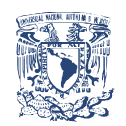
National Autonomous University of Mexico
-

Anahuac University of North Mexico
-

Universidad Autonoma de Guadalajara
-
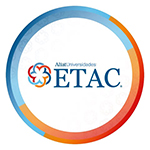
Universidad ETAC
-

Meritorious Autonomous University of Puebla
-
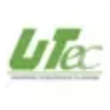
Technological University of Tulancingo
-
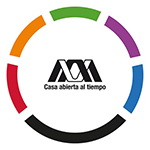
Metropolitan Autonomous University
-

Autonomous University of Sinaloa
-
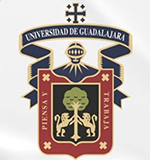
University of Guadalajara
-

Technological University of Huejotzingo
-

Mesoamerican University
-

Istmo University
-

Mariano Galvez University of Guatemala
-

Regional University of Guatemala
-

Galileo University
-

Francisco Marroquín University
-

Rafael Landívar University
-

University of the Valley of Guatemala
-

University of San Carlos of Guatemala
-

Technological Institute of Tlaxcala Plateau
-

Golfo University
-

Technological University of South Sonora
-

Technological University of Huejotzingo
-

Tizimín Institute of Technology
-

Chilpancingo Institute of Technology
